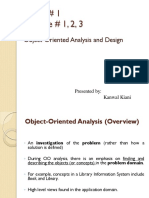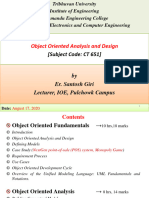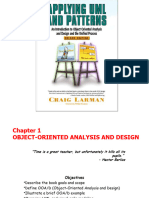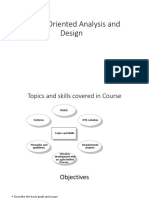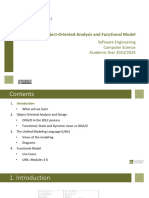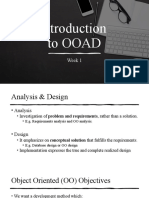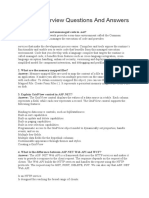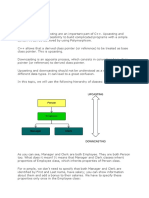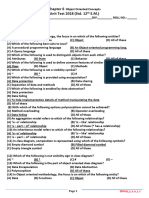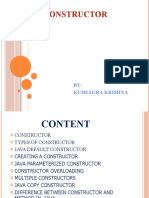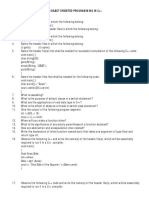0% found this document useful (0 votes)
129 views18 pagesApplying UML and Patterns: Object-Oriented Analysis and Design (OOA/OOD)
Object-oriented analysis and design (OOA/OOD) is important for creating well-designed, robust, and maintainable software that uses object-oriented technologies. Key aspects of OOA/OOD include responsibility-driven design, applying design patterns, and using the Unified Modeling Language (UML) as a tool for thought and communication. The process typically involves defining use cases, creating a domain model to describe real-world concepts, interaction diagrams to show object collaborations, and design class diagrams to illustrate software classes and their relationships. Analysis focuses on investigating requirements while design emphasizes a conceptual solution.
Uploaded by
Fang WangCopyright
© Attribution Non-Commercial (BY-NC)
We take content rights seriously. If you suspect this is your content, claim it here.
Available Formats
Download as PDF, TXT or read online on Scribd
0% found this document useful (0 votes)
129 views18 pagesApplying UML and Patterns: Object-Oriented Analysis and Design (OOA/OOD)
Object-oriented analysis and design (OOA/OOD) is important for creating well-designed, robust, and maintainable software that uses object-oriented technologies. Key aspects of OOA/OOD include responsibility-driven design, applying design patterns, and using the Unified Modeling Language (UML) as a tool for thought and communication. The process typically involves defining use cases, creating a domain model to describe real-world concepts, interaction diagrams to show object collaborations, and design class diagrams to illustrate software classes and their relationships. Analysis focuses on investigating requirements while design emphasizes a conceptual solution.
Uploaded by
Fang WangCopyright
© Attribution Non-Commercial (BY-NC)
We take content rights seriously. If you suspect this is your content, claim it here.
Available Formats
Download as PDF, TXT or read online on Scribd
/ 18






